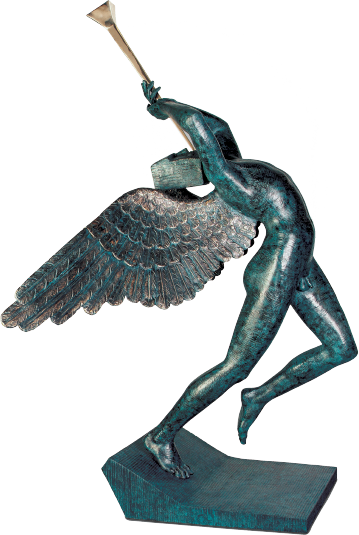
FROM GALILEO GALILEI TO SURREALISM
“… after the same Holy Ambassador had made a new request for some of my theories, I was placed here in Siena, in the archbishopric, where I have been for fifteen days now amongst the inexplicable excesses of courtesy of this most reverend Archbishop…”Letter of Galileo to Andrea Cioli in Florence of 23th July 1633
After the conviction of the Holy Office, Galileo Galilei was a guest of the Archbishop Ascanio II Piccolomini, his old pupil and friend, from 9th July to 15th December of 1633.
As requested by the Archbishop, he had his telescopes dispatched to Siena and used them for his studies in the month of August along with, among the other, Teofilo Gallaccini, an academic of the University of Siena and his peer:
“This is the moon globe, as presented to us by Galileo’s lenses…”
Some drawings made by Gallaccini during sessions of observation of the moon made from the altana (roof terrace) of the Palazzo delle Papesse, are a strong evidence of the presence of Galileo in this palazzo as a man of science, in spite of the recent sentence.
During his stay in Siena, Galileo was able to continue his mechanical studies: in his treatises, he was the first to realise that space and time are not absolute references and that is why he is to be considered the first scientist to introduce and explain the concept of the relativity. His theories influenced first Newton, and then Einstein a few centuries later, subsequently firing Salvador Dalí's interest, mostly in the artist's mature stage of life. After having been strongly influenced by the atomic explosions of the Second World War, in fact, the concepts of space and time relativity began to inspire many of Dalí's works.
While we walk trough the rooms that today house the works of Salvador Dalì, we can still hear the echoes of Galileo’s steps. Through a surreal continuum of space and time, Palazzo delle Papesse in Siena now unites two of the biggest geniuses of humanity, from Art and Science.
Alessandro Marchini
Director of the Astronomic Observatory of the University of Siena
Dalí and Mathematical Sciences
His unquenchable thirst for knowledge led Salvador Dalí to enhance his knowledge of Mathematics and Physics.
This can clearly be seen from his strong interest in Newton’s law of universal gravitation and Einstein’s general theory of relativity. Dalí was both fascinated by the concepts of psychoanalysis and the subconscious (interior world) and mathematics, as well as physics, representing the laws of the exterior world.
Inspired by Heisenberg (1932 Nobel prize in Physics, and one of the founders of quantum mechanics) and his uncertainty principle, the artist wrote in his “Anti-material Manifesto": “In the surrealist period, I wanted to construct an iconography of the interior world, a world of marvels, that stemmed from the studies of my spiritual father, Freud. Today the exterior world, the one of physics, has transcended psychology. My father today is Dr Heisenberg.”
In recent years, prominent international physicists have been providing new and original interpretations of Salvador Dalí’s works.

